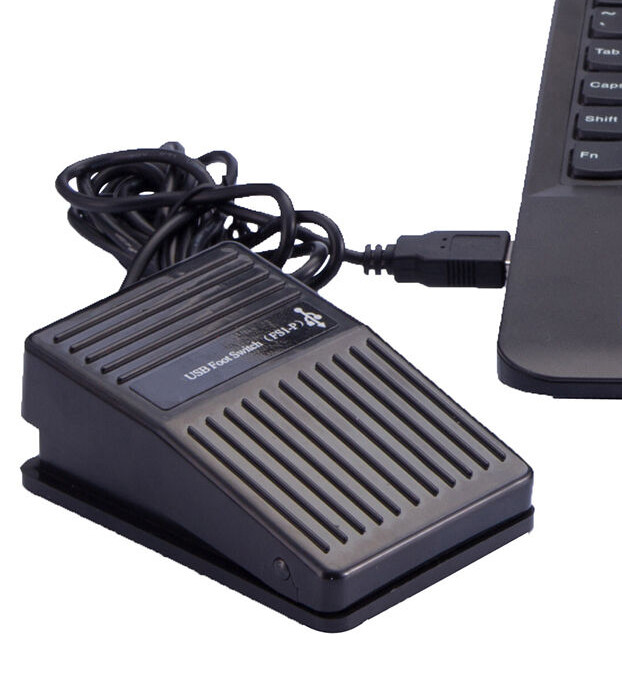What we’re aiming for
In the previous article, we saw how to create a basic looper in shell.
This creates our background sound.
Lets add an “overdub” function, which is a way to add a layer on top of the background,
Here is a diagram showing what we’re aiming for:

If it’s still not clear, here is a video which explains how to use a looper pedal from JustinGuitar youtube channel (see 8:10 timecode):
how we’ll proceed
Like in previous part, we’ll record the background in its own wav file (background.wav), based on pedal pushes. Then we’ll play it in a loop. On the third push, we’ll record the layer in layer.wav, and play it in subsequent loops, in parallel with background.wav.
IPC
Because terminal input can only be done in the foreground, We’ll have to capture the overdub pedal push in the foreground, and transfer the push to the main loop running in the background.
To do that, we’ll use a very basic aproach: a text file which will contain false if the pedal was not pushed, and true if the pedal was pushed.
╭────────────╮ ╭───────────╮ ╭─────────────╮ │ │ reads │ │ writes │ │ │ main loop ├────────────>│ text file │<────────────┤ pedal input │ │ │ │ │ │ │ ╰────────────╯ ╰───────────╯ ╰─────────────╯
let’s do it
First, we will start the script by removing files from previous recordings:
rm background.wav layer.wav
As in previous part, we’ll be using this function to capture key presses.
input() {
stty raw
dd bs=1 count=1 2> /dev/null
stty -raw
}
then, let’s record background.wav - this is the same thing as in previous article
record_background() {
input
arecord -f S16_LE -r 48000 -D hw:1,0 background.wav &
pid=$!
sleep 1
input
kill $pid
}
As mentioned earlier, we’ll be using a file named should_record_layer to notify the main_loop that it should start recording the layer (when it contains true), and initialize it at false.
echo false > should_record_layer
main loop
then let’s start the main loop
while true
do
play_layer
record_layer
aplay background.wav
[ $? -ne 0 ] && break
[ -n $record_layer_pid ] && kill $record_layer_pid
[ -n $play_layer_pid ] && kill $play_layer_pid
done
Let’s have a look at what we do here.
First, if a layer was recorded, we play it in the background, and set a variable with aplay pid:
play_layer() {
play_layer_pid=""
if [ -e "layer.wav" ]
then
aplay layer.wav &
play_layer_pid=$!
fi
}
Then, if should_record_layer file contains true, we record in the background, and set a variable with arecord pid.
Once arecord is started, we can set should_record_layer to false.
record_layer() {
record_layer_pid=""
if $(cat should_record_layer)
then
arecord -f S16_LE -r 48000 -D hw:1,0 layer.wav &
record_layer_pid=$!
echo false > should_record_layer
fi
}
Then we can start playing background.wav:
aplay background.wav
When we’re done playing background.wav, we kill arecord (the layer recorder) if it is running. We also kill aplay (the layer player) if it is running.
[ -n $record_layer_pid ] && kill $record_layer_pid
[ -n $play_layer_pid ] && kill $play_layer_pid
let’s finish it
Then, we call main_loop in the background, wait for a pedal push, and notify main_loop
via should_record_layer file.
main_loop &
main_loop_pid=$!
input
echo true > should_record_layer
Finally, we wait for main_loop to stop:
wait $main_loop_pid
The whole script
Here is the whole script
#!/usr/bin/env sh
input() {
stty raw
dd bs=1 count=1 2> /dev/null
stty -raw
}
record_background() {
input
arecord -f S16_LE -r 48000 -D hw:1,0 background.wav &
pid=$!
sleep 1
input
kill $pid
}
play_layer() {
play_layer_pid=""
if [ -e "layer.wav" ]
then
aplay layer.wav &
play_layer_pid=$!
fi
}
record_layer() {
record_layer_pid=""
if $(cat should_record_layer)
then
arecord -f S16_LE -r 48000 -D hw:1,0 layer.wav &
record_layer_pid=$!
echo false > should_record_layer
fi
}
main_loop() {
echo false > should_record_layer
while true
do
play_layer
record_layer
aplay background.wav
[ $? -ne 0 ] && break
[ -n $record_layer_pid ] && kill $record_layer_pid
[ -n $play_layer_pid ] && kill $play_layer_pid
done
}
rm background.wav layer.wav
record_background
main_loop &
main_loop_pid=$!
input
echo true > should_record_layer
wait $main_loop_pid
to conclude
With less than 60 lines of shell, we’ve made a software pedal with a layer.
With a cheap USB pedal like this which sends a key press, this script is really nice to use:
